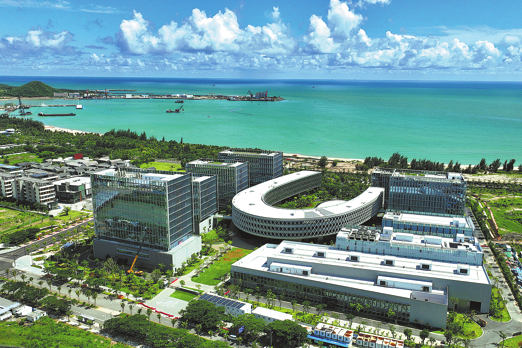US economy takes worst hit since WWII
Tail-end uptick in 2020 fails to offset damage from virus in 3.5 percent fall

Stuck in the grip of a viral pandemic, the United States' economy shrank last year by the most in 74 years.
The country's GDP decreased by 3.5 percent amid the fallout from the COVID-19 pandemic, according to data released by the US Commerce Department on Thursday. That was the largest annual decline since 1946.
It was the first time the US economy contracted for a whole year since a 2.5 percent fall in 2009 following the onset of the global financial crisis in 2008.
The US economy grew at an annualized rate of 4 percent in the fourth quarter of 2020, as economists had predicted. The number represents how much the economy would have grown had the fourth-quarter pace lasted for 12 months.
GDP slumped by a record 31.4 percent on an annualized basis in the April-June quarter following the initial pandemic lockdowns. In the July-September quarter, the figure raced to a record 33.4 percent annualized pace. The final quarter of 2020 marks a sharp slowdown from the third quarter's growth.
"The increase in fourth-quarter GDP reflected both the continued economic recovery from the sharp declines earlier in the year and the ongoing impact of the COVID-19 pandemic, including new restrictions and closures that took effect in some areas of the United States," the US Commerce Department said.
The government's report was its first of three estimates of growth for the last quarter. The figure will be revised in February and March.
430,000 deaths
The data came in as the country's tally of COVID-19 infections exceeded 25.6 million, with more than 430,000 related deaths, as of Thursday, according to Johns Hopkins University.
Hiring in the US has slowed for six straight months. The number of citizens applying for unemployment benefits decreased but remained at a historically high 847,000 in the week ending on Jan 23, the US Labor Department said on Thursday. The number means that layoffs are continuing as the pandemic continues.
Overall, nearly 4.8 million people received traditional state unemployment benefits in the week ending on Jan 16. That is a drop of nearly 5 million from the previous week and far below a historic peak of nearly 25 million in May, when the virus outbreak nearly halted the economy, according to The Associated Press.
The decreased number marks a sign that some of the unemployed are finding new jobs and that others have exhausted their regular allotment of unemployment insurance-the number of people applying for extended state benefits increased more than 1.5 million for the week that ended on Jan 9, up about 100,000 from the week before.
In the two years before the pandemic, weekly applications for jobless aid typically numbered between 200,000 and 250,000.
"The longer people are unemployed, the harder it is to get back into the work force," Kathy Bostjancic, chief US financial economist at Oxford Economics, told The Wall Street Journal on Thursday. "The longer this continues, the more there is a heightened risk of medium-term scarring."
US President Joe Biden has unveiled a $1.9 trillion COVID-19 relief proposal, but it has drawn opposition from a growing number of congressional Republicans. It's unclear whether the Biden administration would secure enough votes for it to pass.
Agencies and Xinhua contributed to this story.

Today's Top News
- Macao SAR holds flag-raising, reception to mark 26th anniversary of return to motherland
- China issues rules to regulate pricing practices of internet platforms
- US hits over 70 IS-linked targets in Syria in massive retaliatory strikes
- Coffee needs cooperation, not confrontation
- Technological innovation brings cultural heritage alive
- Consumption to play bigger part in growth






























